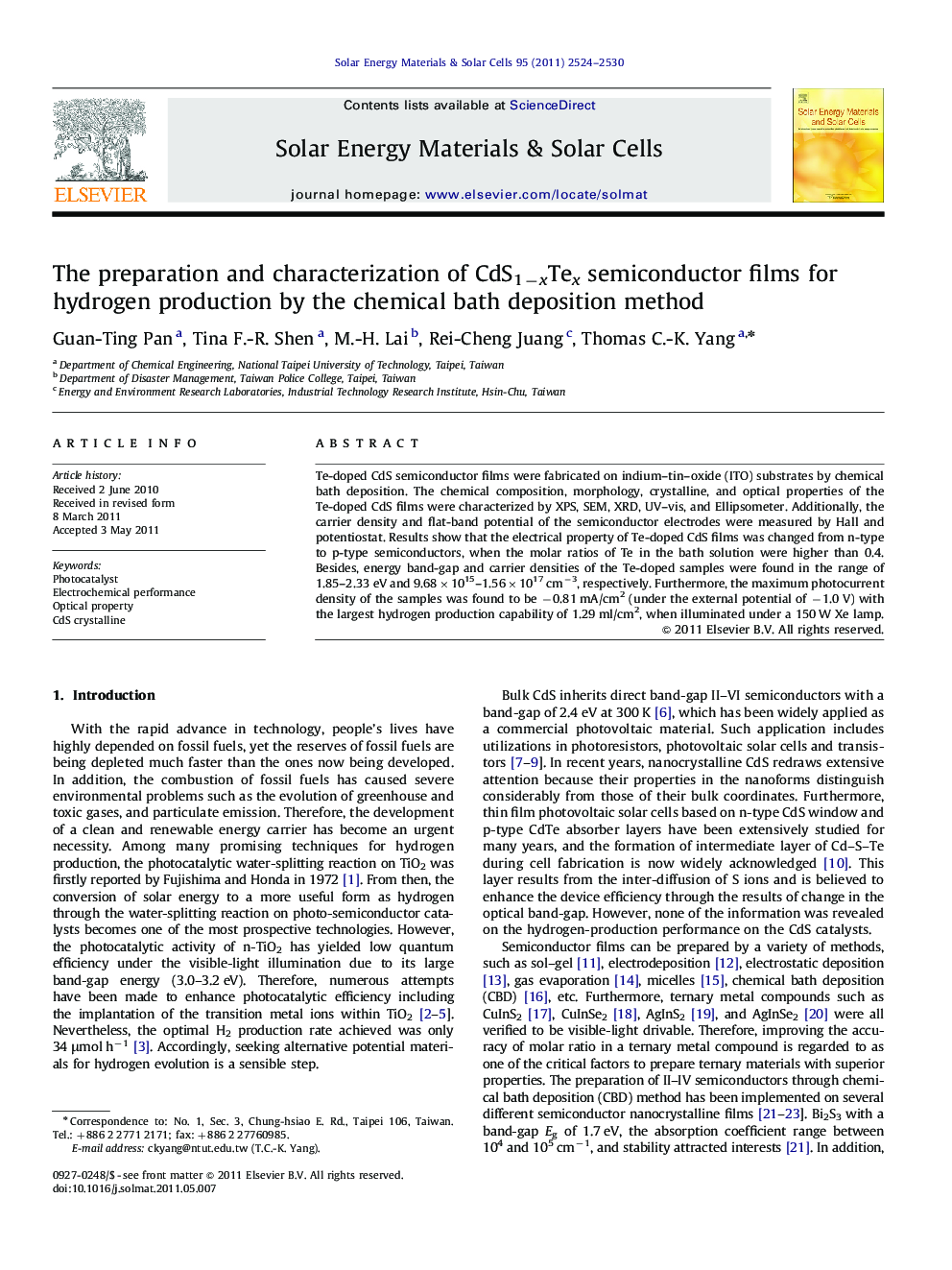| کد مقاله | کد نشریه | سال انتشار | مقاله انگلیسی | نسخه تمام متن |
|---|---|---|---|---|
| 78816 | 49342 | 2011 | 7 صفحه PDF | دانلود رایگان |

Te-doped CdS semiconductor films were fabricated on indium–tin–oxide (ITO) substrates by chemical bath deposition. The chemical composition, morphology, crystalline, and optical properties of the Te-doped CdS films were characterized by XPS, SEM, XRD, UV–vis, and Ellipsometer. Additionally, the carrier density and flat-band potential of the semiconductor electrodes were measured by Hall and potentiostat. Results show that the electrical property of Te-doped CdS films was changed from n-type to p-type semiconductors, when the molar ratios of Te in the bath solution were higher than 0.4. Besides, energy band-gap and carrier densities of the Te-doped samples were found in the range of 1.85–2.33 eV and 9.68×1015–1.56×1017 cm−3, respectively. Furthermore, the maximum photocurrent density of the samples was found to be −0.81 mA/cm2 (under the external potential of −1.0 V) with the largest hydrogen production capability of 1.29 ml/cm2, when illuminated under a 150 W Xe lamp.
Te-doped CdS films were successfully deposited on ITO glass using chemical bath deposition. The flat-band potentials of these samples lie in the range from −0.711 to +0.061 V vs. normal hydrogen electrode (NHE) for n-type, while +0.217 to +0.398 V vs. NHE for p-type. The maximum photocurrent density of the as-prepared samples was found to be −0.94 mA/cm2 with external bias potential of −1.0 V under the white-light illumination with the intensity of 100 mW/cm2. The best performance of hydrogen evolution by Te-doped CdS films was 1.29 ml/cm2.Figure optionsDownload as PowerPoint slideHighlights
► We synthesize Te-doped CdS films via chemical bath deposition.
► The electrical property of n- and p-type varied with Te molar ratio in the films.
► The maximum photocurrent density of the sample was found to be −0.94 mA/cm2.
► The Te-doped CdS films have good performance in hydrogen production.
Journal: Solar Energy Materials and Solar Cells - Volume 95, Issue 8, August 2011, Pages 2524–2530